AI at Work
Building A Global Content Repurposing Strategy with AI for Multiple Markets (with Real Examples)

Akshita Sharma · Content Marketing Associate
May 21st, 2025 · 13 min read

Despite investing heavily in content creation, your materials reach only a fraction of potential customers worldwide. Why?
It’s probably because of an outdated content localization approach that traps your best content in siloed, resource-intensive workflows.
When a single high-value whitepaper requires 40+ hours for proper localization across just five markets, scaling becomes prohibitive. The math simply doesn't math. What you need is an AI content repurposing strategy where your highest-value assets evolve and adapt across languages, platforms, and cultural contexts—all while preserving your core messaging and brand voice.
We're here to provide you with a blueprint for implementing an AI content repurposing strategy on a global scale.
Why is a scalable content repurposing strategy important?
Traditional vs AI content repurposing workflows
How Typeface enhances your global content repurposing strategy
Real examples of successful global content repurposing
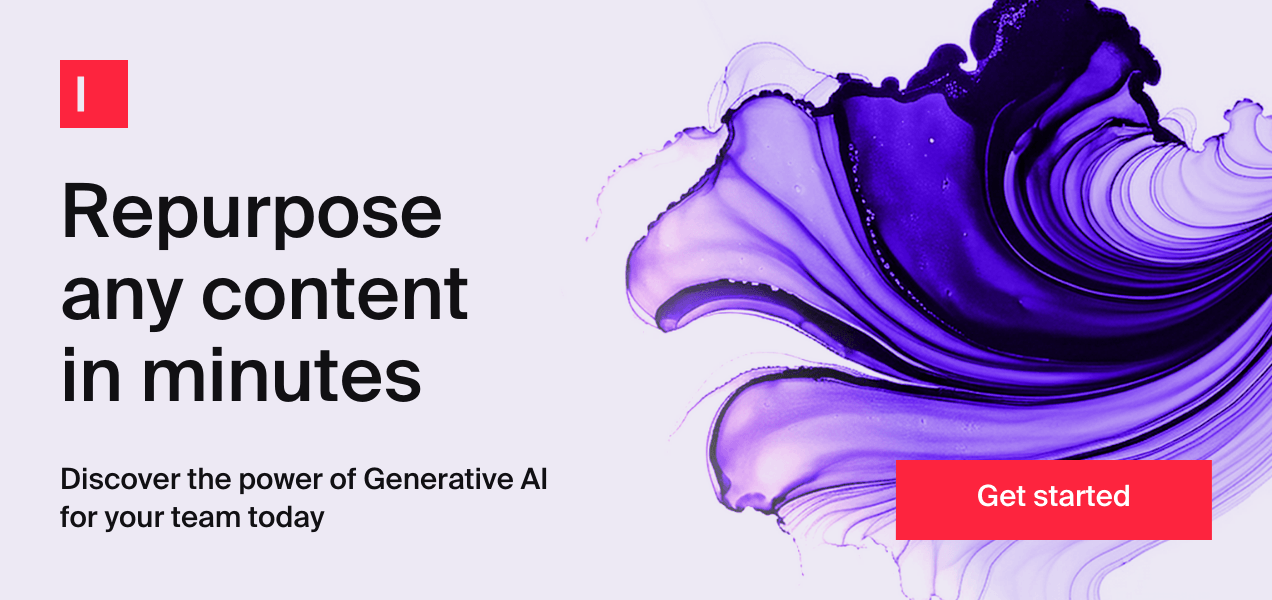
Why is a scalable content repurposing strategy important?
It’s critical to have a scalable strategy for content repurposing because the demand for fresh, engaging content across different platforms and global markets is increasing, which means marketing teams face mounting pressure to produce more, faster, and with greater relevance.
Simply scaling content creation efforts linearly is often unsustainable and inefficient. To keep up with the global demands, there needs to be a strategic shift towards maximizing the value derived from existing content assets through content repurposing.
Why do you need to repurpose content?
The fundamental rationale behind content repurposing is to extend the lifespan and amplify the impact of your high-performing content. Significant resources are invested in creating valuable original content. A content repurposing strategy ensures these investments yield greater returns by preventing valuable content from gathering dust after its initial publication.
When you want to reach international audiences, the content repurposing strategy requires not only adapting content formats but also ensuring relevance within specific local markets. It must intertwine content repurposing with content localization.
Different repurposed assets should work together to amplify the core message and create a stronger, more pervasive brand presence across multiple markets. The compounding effect of a well-executed content repurposing strategy ensures that valuable insights and brand stories continuously work for the brand long after their initial creation.
What is the difference between content repurposing and content localization?
While repurposing and localization are related, they are two different processes:
Content repurposing focuses on transforming the format of existing content to suit different platforms, channels, or audience consumption preferences. For example, turning a blog post into a series of social media snippets, converting video content into a blog post, or summarizing a whitepaper into an email newsletter.
Content localization, on the other hand, is the process of adapting content to meet the specific linguistic, cultural, and market requirements of a target locale. It goes beyond simple translation of content and focuses on transcreation—a more nuanced approach that preserves the creative intent and core message of the original content while tailoring it for new audiences. Transcreation requires strategic rewriting and reconceptualization to ensure the content delivers the same emotional impact and resonance in different cultural contexts.
The synergy between these two processes is where a truly effective global content strategy lies. It involves a two-dimensional approach:
Repurposing: Take a central, high-value piece of content and transform it into multiple relevant formats.
Localizing: Adapt each of those repurposed formats for specific target markets, considering language, culture, and local platform norms.
It's not just about adapting the content but also adapting the choice of formats for each market. The platforms and content types that resonate most effectively can vary significantly between regions. To ensure that resources are used effectively, market intelligence should guide the prioritization of content formats for specific markets. This way, efforts are concentrated on the most effective channels for each audience.
With this integrated approach, you can create a matrix of content variations (Format x Market). But managing this level of complexity through traditional methods can become challenging, if not impossible. And this highlights the need for AI-driven content repurposing and localization.
Traditional vs AI content repurposing workflows
Here's how traditional content repurposing works:
Manual analysis of the original content to identify and highlight the core messages, key takeaways, compelling statistics, or quotable soundbites suitable for adaptation.
Manual rewriting and reworking, where content is manually adapted for different formats and markets (can take hours or even days). This manual adaptation might require frequent tool switching, which leads to fragmented workflows, inefficiencies, and the tedious task of copying and pasting content between different environments.
Each newly created version then requires manual review and editing. This involves rereading every iteration to check for clarity, logical flow, grammatical accuracy, and, crucially, consistency with the original message and the overall brand voice.
Finally, the distribution process is also manual. Each finalized version needs to be copied and pasted into scheduling tools or manually exported in the correct file formats for uploading to various platforms.
The inherent nature of this manual process can be tedious because it is fundamentally constrained by human bandwidth. The time required for each step makes it incredibly difficult to scale repurposing efforts effectively. The hours or days spent on these manual, often repetitive tasks represent a significant opportunity cost. This time could arguably be better invested in higher-value activities like strategic planning.
Here's how AI content repurposing works:
Uploading original source content directly into the AI system for repurposing.
Once uploaded, the AI identifies main themes and extracts key points. Based on user-defined goals and guidelines, the AI then automatically reformats this extracted information into the desired output, adhering to platform specifications, target audience segments, and established brand requirements. With simple commands, the AI can also switch the tone of the content or translate it into multiple languages.
AI can also assist with transcreation and advanced content localization tasks. Typeface, for instance, can aid in the creation or adaptation of visual content for multiple markets. It can also support local SEO by suggesting and incorporating relevant keywords for specific regions.
AI-repurposed content is often estimated to be 80-90% complete and accurate. This reduces the burden on human reviewers, who typically only need to perform light editing, fact-checking, and quick tweaks to add nuance.
Users can export content directly to content management systems (CMS), social media management tools, or advertising platforms through built-in integrations.
How Typeface enhances your global content repurposing strategy
AI content repurposing offers significant advantages over traditional methods. But our enterprise-grade platform goes a step further to provide a suite of integrated features specifically designed to tackle the complexities of scaling personalized, on-brand content across global markets. Typeface is a comprehensive marketing AI platform that breaks down the silos of the traditional content supply chain by unifying brand intelligence (Brand Hub), specialized AI automation (Arc Agents), and collaborative workflows (Spaces) into a cohesive system.
Central to our content repurposing toolkit is the Brand Hub, a dynamic system of intelligence that centralizes and learns from all aspects of your brand—guidelines, voice, tone, visual styles, approved assets, audience data, and even performance insights. This allows the AI to automatically generate content—both text and visuals—that adheres to brand standards, ensuring consistency across countless repurposed and localized variations.
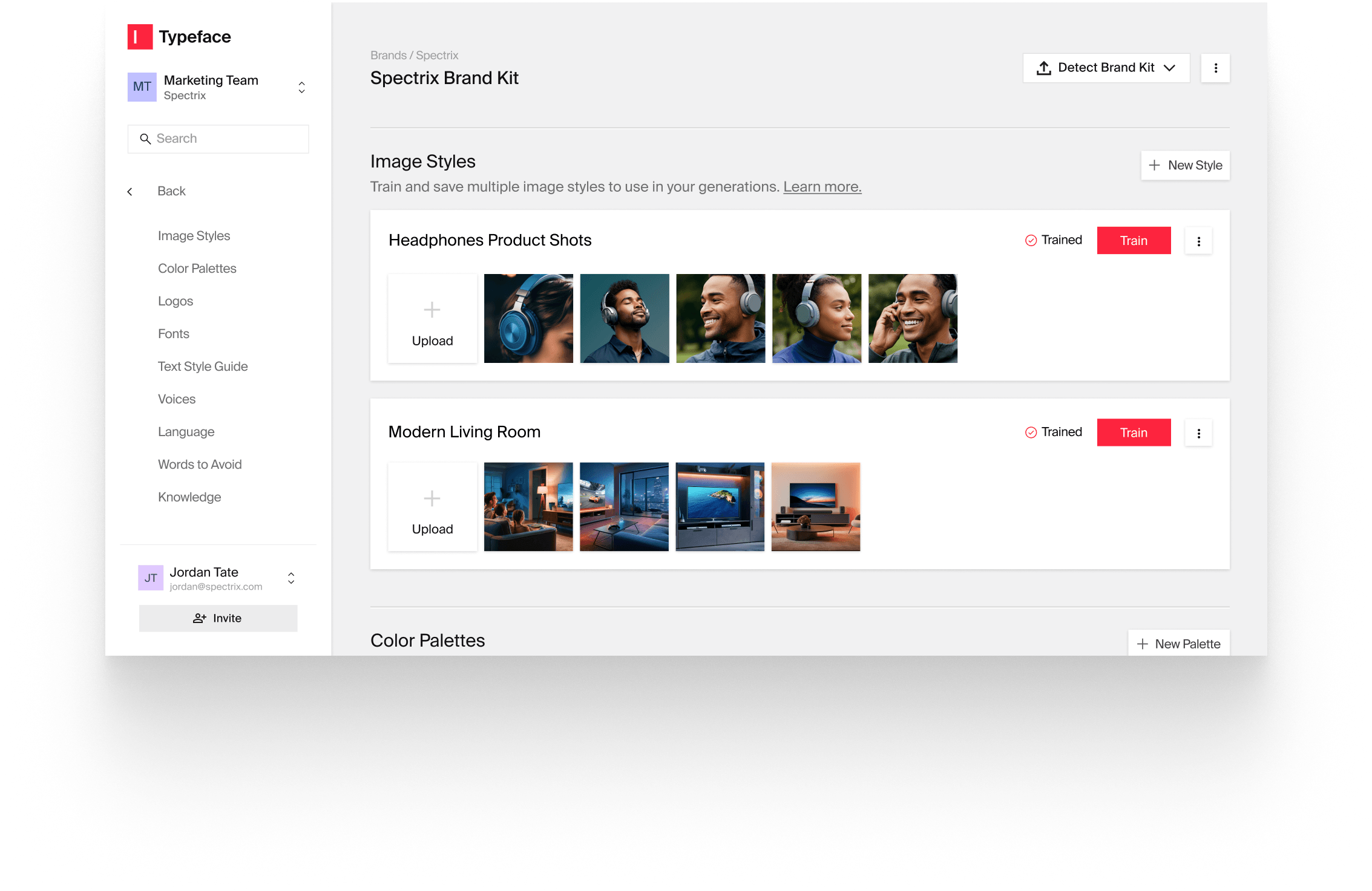
Going even further, the integrated Brand Agent proactively checks content for compliance, brand safety, and guideline adherence before publication, offering granular controls necessary for managing complex global operations.
Typeface’s personalization and localization features are also helpful for global content repurposing strategies. Users can create and save detailed audience segments based on demographics, interests, and behaviors, or directly pull data from existing Customer Data Platforms (CDPs). These segments can then be applied during content repurposing to ensure messaging is highly targeted and relevant.
For the core task of repurposing, Typeface offers a range of AI content repurposing templates like Text Blend, Web Blend, YouTube Blend, Vimeo Blend, and Document Transform that allow users to easily upload content from various sources (URLs, video links, documents, raw text) and transform it into desired formats.
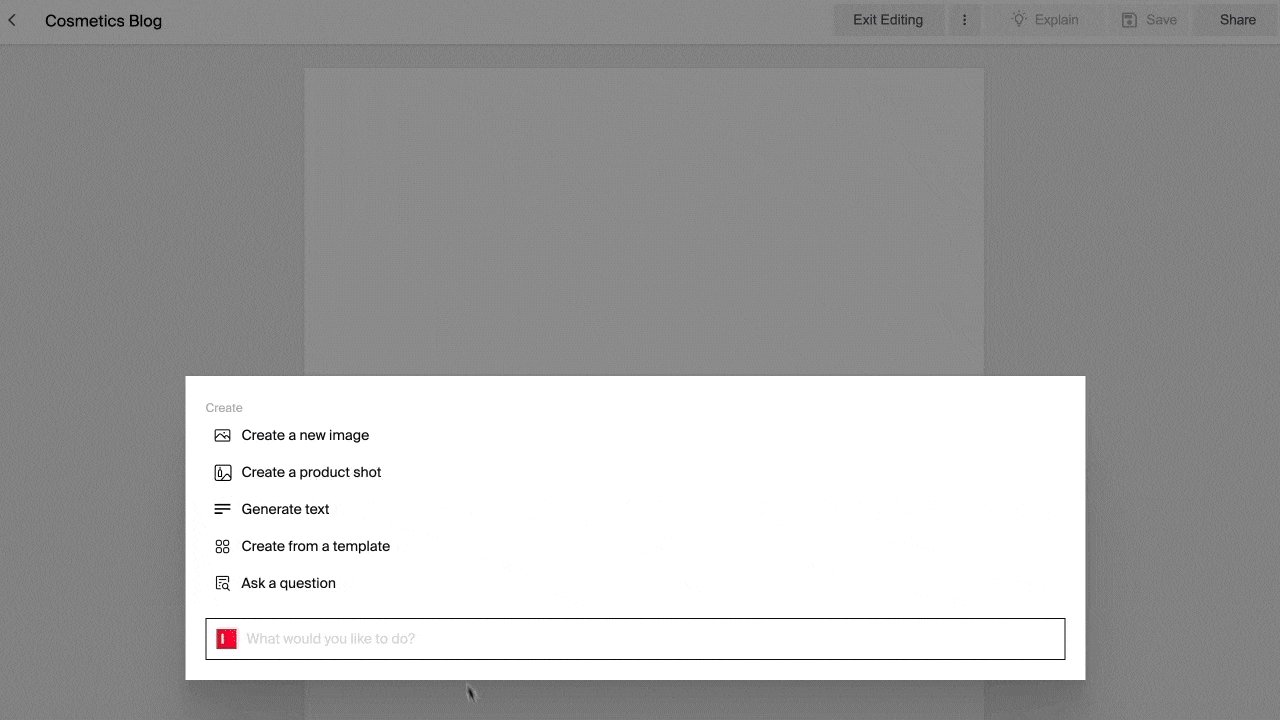
The platform also offers integrated language translation and transcreation support. For image personalization, the AI Visual Inspiration Studio allows the creation and adaptation of images that resonate locally and maintain product accuracy, while the Ad Agent enables the automatic resizing and adaptation of ad creatives for different channels, audiences, and markets from a single source asset.
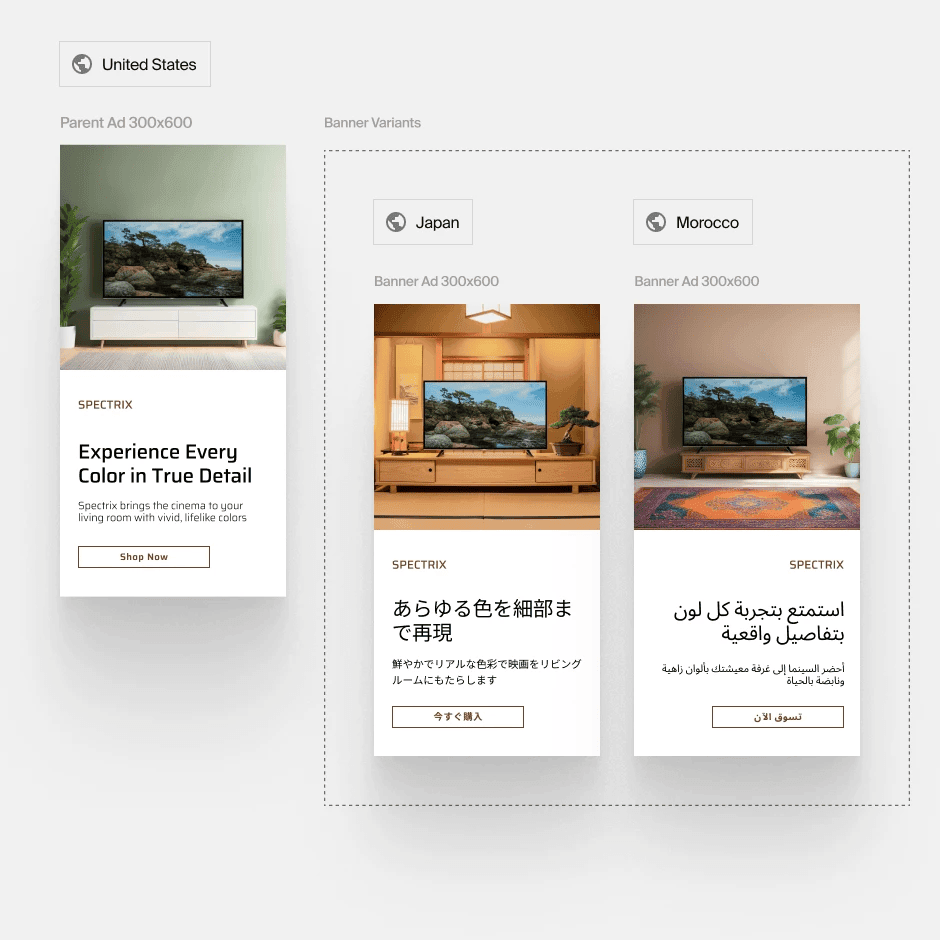
Underpinning this is a robust integration system, allowing you to connect seamlessly with your DAMs, CMSs, CDPs, ad platforms, social media tools, or productivity suites (Google Workspace, Microsoft Teams) via numerous pre-built connectors.
The efficiency gains offered with our AI are massive, with brands often citing reductions in content repurposing time by almost 50%. A major automotive company repurposed digital assets for a broadcast ad in mere hours, avoiding the time and cost of a separate photoshoot. They also achieved 52% faster asset creation when using Typeface. This acceleration allows content to reach markets faster, maximizing its potential impact and return on investment.
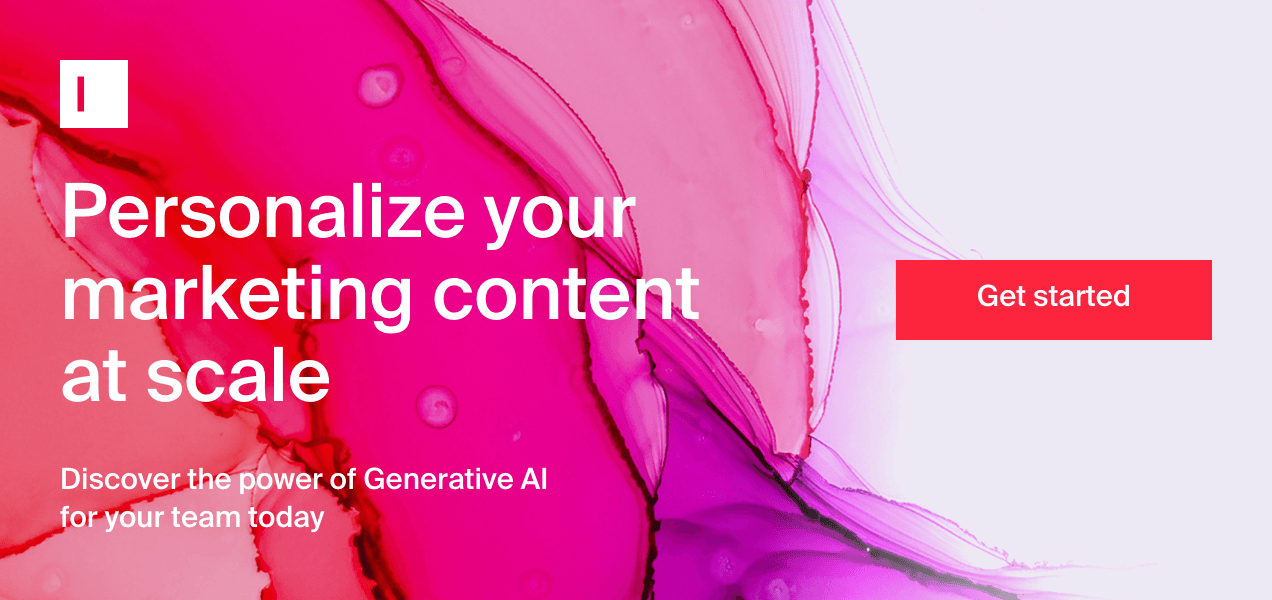
Real examples of successful global content repurposing
Analyzing how leading global brands are repurposing content for different markets provides valuable insights into effective repurposing and localization strategies. Here are some examples that showcase the power of strategic global content repurposing:
1. Red Bull
Red Bull's marketing strategy is heavily reliant on compelling visuals. Reaching a diverse international audience requires them to adapt this core content into various formats suitable for different platforms and localized for cultural and linguistic nuances.
Consider this animated Red Bull ad repurposed and localized for South African and Indian markets, with one variant showing a batsman in South African jersey and the other one showing the cricketer in the Indian jersey.


While maintaining strong global brand consistency (iconic logo, cans, the "Red Bull Gives You Wings" slogan), Red Bull demonstrates sophisticated localization, adapting these ad campaigns to resonate with local audiences.
2. BMW
BMW, as a premium global automotive brand, invests in creating high-quality content that showcases its vehicles, technological innovations, and brand ethos of "the ultimate driving machine." To maximize the impact of this investment across its diverse international markets, BMW employs a strategy that involves repurposing core content into localized versions for various formats that resonate with regional audiences. This includes localized websites, region-specific social media accounts, and adaptation of marketing messages and visuals to align with regional preferences and regulations.
Here's an example of two Instagram posts from BMW's official accounts featuring the BMW X3, but they're presented in distinctly different settings that resonate with their respective target audiences:
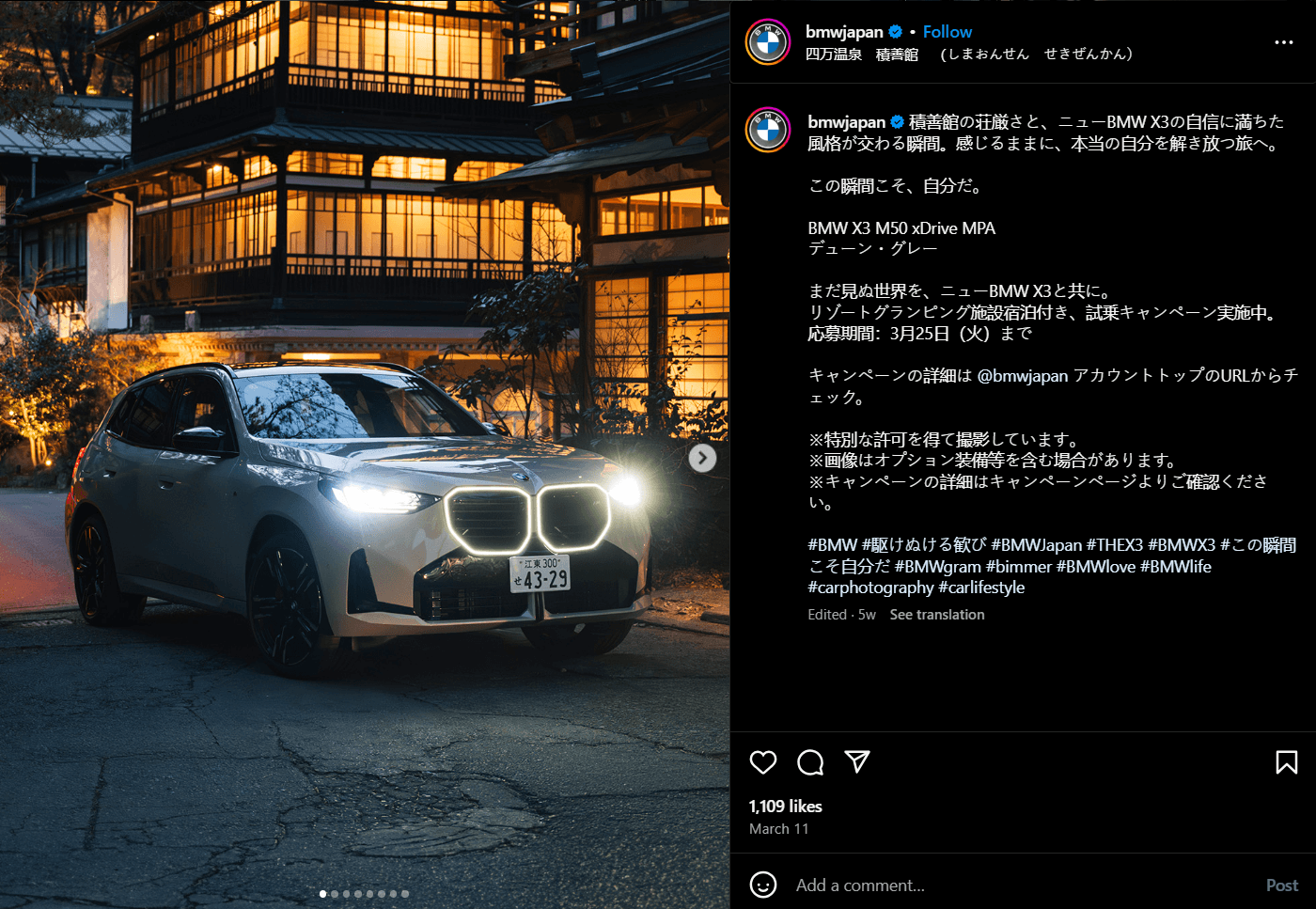
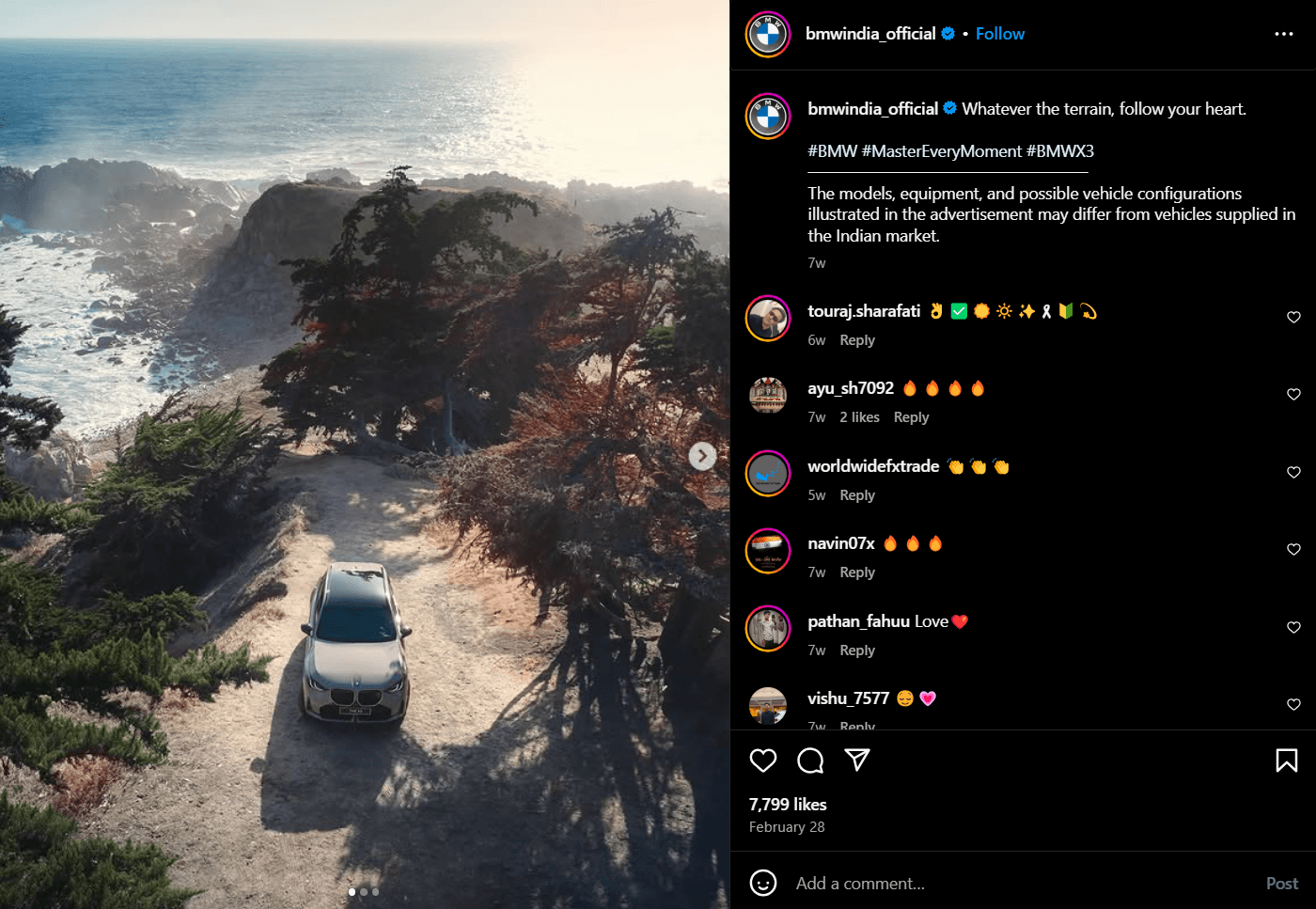
Each post places the same product in settings that resonate with local cultural values and aspirations. This BMW Japan visual shows the BMW X3 in front of a traditional Japanese ryokan (inn), while the one for the Indian market shows the car on a scenic coastal road. Both use stunning photography but tell different stories—tradition/luxury in Japan versus adventure/exploration in India. The content is presented in the local language with regionally relevant messaging.
This approach allows BMW to maintain global brand consistency while creating emotional connections with consumers in diverse markets through culturally resonant imagery and messaging.
3. Coca-Cola
Coca-Cola is a master of global branding, focusing on universal emotional themes like happiness, togetherness, refreshment, and the magic of shared moments. Their brand identity is instantly recognizable through iconic assets like the logo, bottle shape, and signature red color.
Coca-Cola executes its global campaigns, like the highly successful "Share a Coke," across virtually all channels—TV, online video, social media, OOH, dedicated digital hubs, mobile apps, in-store promotions, and live events. But localization is arguably where Coca-Cola truly excels. The "Share a Coke" campaign is a textbook example, replacing the brand name with locally popular first names in each specific market around the world.
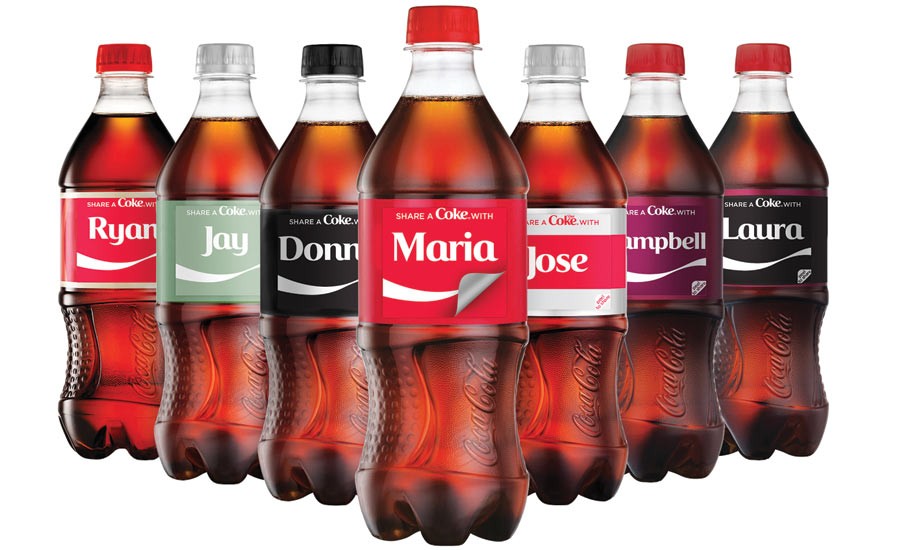
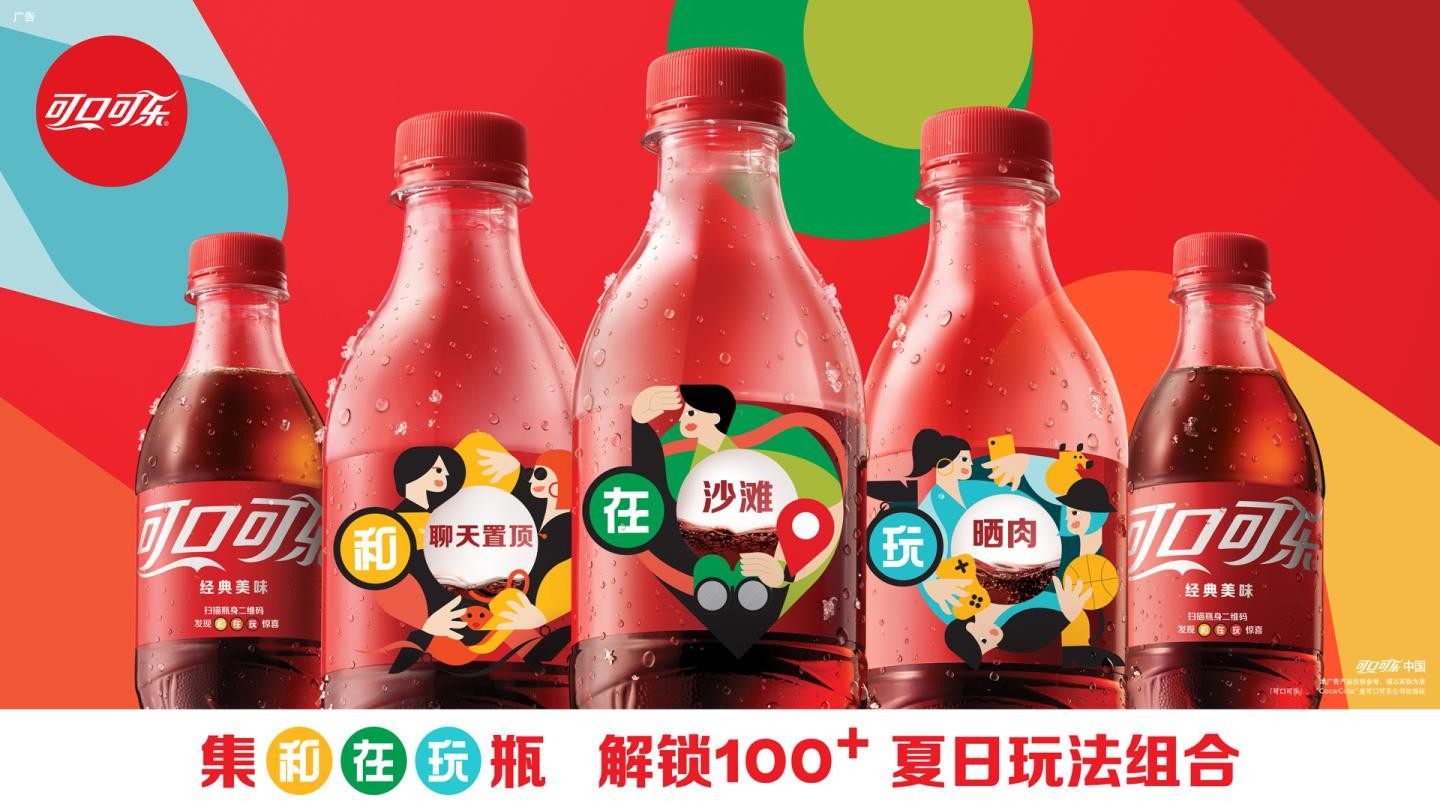
Share a Coke campaign in Greater China (Source)
They also meticulously adapt slogans, messaging, packaging, and even the brand name itself (like "Kekoukele" in China ) to ensure cultural relevance and resonance.
Repurpose your best content for global success
The difference between companies that struggle with fragmented, resource-intensive content repurposing and localization and those that successfully scale their content across cultures often comes down to having the right strategy and technology in place. Leading brands like Red Bull, BMW, and Coca-Cola demonstrate the powerful impact of adapting core content assets while maintaining brand consistency.
Typeface offers the comprehensive solution modern marketing teams need to break free from traditional constraints. When you centralize brand intelligence, automate repetitive tasks, and enable sophisticated content localization at scale, you extract maximum value from every piece of content you create. The result? Not just wider reach, but deeper resonance with audiences across every market you serve.
Schedule a demo with Typeface today to discover how our AI platform can help you repurpose high-value content across markets while maintaining your authentic brand voice.
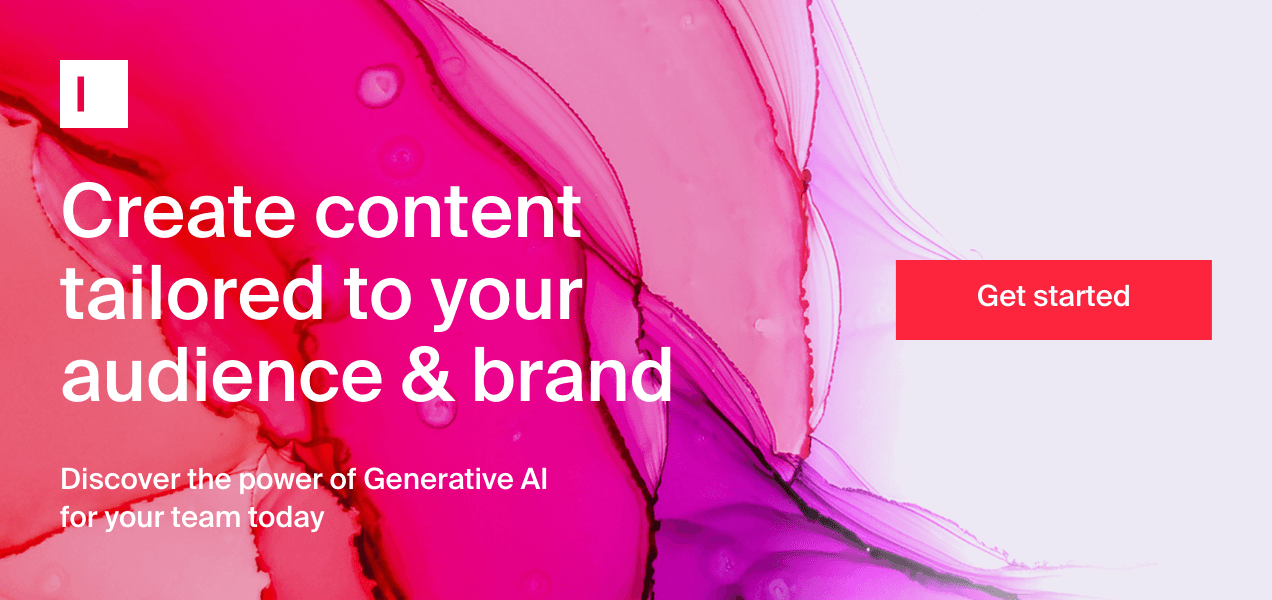
Share
Related articles

AI at Work
Content Repurposing with AI: 5 Ways to Repurpose Your Content for Maximum Impact

Neelam Goswami · Content Marketing Associate
November 29th, 2024 · 13 min read

AI at Work
How to Use an AI Text Summarizer to Repurpose Valuable Content

Akshita Sharma · Content Marketing Associate
April 24th, 2025 · 11 min read
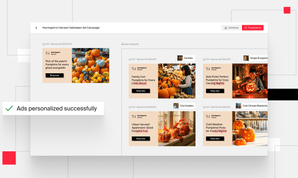
Product
How Creative Teams are Scaling Global Ad Campaigns with 1000+ Assets in Minutes vs. Months

Michal Bloch Ron · Director of Product
November 19th, 2024 · 5 min read